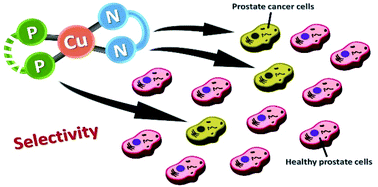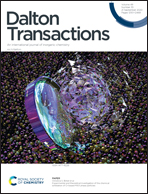New copper(i) complexes selective for prostate cancer cells†
Abstract
A new family of eighteen Cu(I) complexes of the general formula [Cu(PP)(LL)][BF4], where PP is a phosphane ligand and LL represents an N,O-heteroaromatic bidentate ligand, has been synthesized and fully characterized by classical analytical and spectroscopic methods. Five complexes of this series were also characterized by single crystal X-ray diffraction studies. The cytotoxicity of all compounds was evaluated in breast (MCF7) and prostate (LNCap) human cancer cells and in a normal prostate cell line (RWPE). In general, all compounds showed higher cytotoxicity for the prostate cancer cells than for the breast cells, with IC50 values in the range 0.2–2 μM after 24 h of treatment. The most cytotoxic compound, [Cu(dppe)(2-ap)][BF4] (16), where dppe = 1,2-bis(diphenylphosphano) ethane and 2-ap = 2-acetylpyridine, showed a high level of cellular internalization, generation of intracellular ROS and activation of the cell death mechanism via apoptosis/necrosis. Owing to its high cytotoxic activity for LNCap cells, being 70-fold higher than that for normal prostate cells (RWPE), complex (16) was found to be the most promising for further research in prostate cancer models.



 Please wait while we load your content...
Please wait while we load your content...